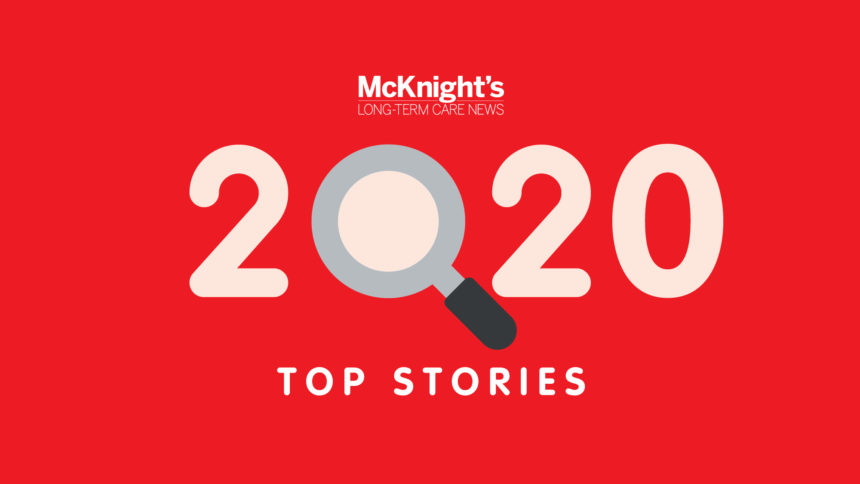
The coronavirus pandemic was, beyond question, the top story of 2020 for nursing home operators and other long-term care providers, among others. But that wasn’t the only subject that kept readers’ attention this year.
Here’s a rundown of the top 7 stories that McKnight’s Long-Term Care News readers opened over the past 12 months.
‘Shocking’ therapy cuts slated for 2021
The Centers for Medicare & Medicaid Services in early December finalized its 2021 physician pay rule, which becomes effective Jan. 1, 2021. The pay rule includes cuts to physical, occupational and speech-language therapy payments for nursing home patients by 9%.
Therapy providers and long-term care advocates sounded off, calling CMS’ move “shocking” since it will significantly cut services that help patients keep themselves healthy or help them recover from COVID-19. Advocates are still pushing to get quick Congressional relief from the cuts.
Unprecedented federal action bans most nursing home visitors
The federal government took extreme steps in March to protect nursing home residents from COVID-19, which was rapidly spreading throughout facilities around the country at the time.
CMS released guidance that called on facilities to restrict visitation of all visitors and non-essential healthcare personnel, with the exception of compassionate care and end-of-life situations. The guidance also called for canceling all group activities and communal dining, and for providers to begin actively screening residents and workers for symptoms.
The agency called the move the “most aggressive and decisive recommendations with respect to nursing home safety in the face of the spread of COVID-19.”
CMS paves way for resuming visits at nursing homes
Vice President Mike Pence and CMS Administrator Seema Verma in mid-September announced new guidance that laid the framework for nursing homes to facilitate in-home visitation — six months after the agency issued its unprecedented guidance halting visitation at nursing homes.
Providers who failed to do so without good cause faced threats of citations and penalties.
Nurse aide training, certification requirements waived
Nursing homes that were in need of more direct-care workers got a big boost from federal regulators in early April after CMS waived a rule that restricted new aides from working longer than four months without being certified.
Providers have heartily welcomed the relaxed training requirements since it helped boost the industry workforce amid severe staffing shortages during the pandemic.
Readmission resident-screening rules changed
Prior to the pandemic, CMS announced it was in the process of revising its Readmission Screening and Resident Review regulations — the first major change to the rules since the early 1990s.
States and nursing homes were allowed to temporarily suspend their PASRR assessments for new residents for 30 days due to the ongoing public health crisis.
Feds distribute point-of-care COVID-19 tests to all nursing homes
The Trump administration was very active this year thanks to the pandemic. One major move to address and stop the spread of the disease at nursing homes was to supply point-of-care COVID-19 tests to all eligible U.S. nursing homes that allowed providers to rapidly test and receive the results on the spot.
The initiative was announced in July and completed by mid-September. Providers ultimately received a total of 13,985 instruments and more than 4.9 million tests by the end of September.
COVID-centered, infection control training for nursing homes unveiled
As part of an additional $5 billion in relief funding, federal regulators announced an unprecedented infection control training program for nursing homes centered around stopping the spread of COVID-19.
Some of the other stories that kept readers captivated this year included: Recommendations released by the Coronavirus Commission on Safety and Quality in Nursing Homes on how regulators and providers can learn from the pandemic or other public health emergencies; CMS orders resumption of nursing home staffing data collections; and data reveals initial symptoms of coronavirus patients may be mild or nonexistent.





